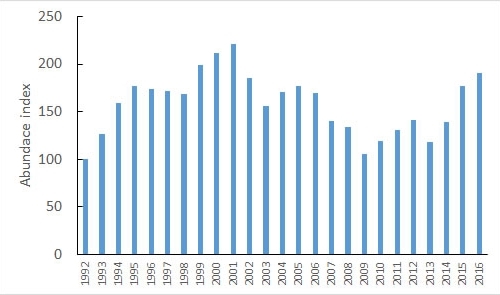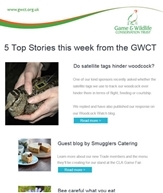 By Chris Stoate, Head of Research, Allerton Project
By Chris Stoate, Head of Research, Allerton Project
It seems remarkable that I have now been monitoring songbird numbers at Loddington for a quarter of a century, carrying out eight early morning transect counts each summer.
Over that time, our research has expanded to cover a wide range of agri-environmental issues, influencing both policy and practice on individual farms, but our monitoring of bird numbers has continued unchanged throughout. Long-term datasets such as this provide an insight into issues which cannot be explored through short-term research projects.
Long before the term ‘ecosystem services’ came into use, we carried out research into several wildlife species, recognising the important role they play in helping to meet our needs. We have looked at spiders and predatory beetles in field margins and beetle banks because of the role they play in controlling aphids and other crop pests.
We have researched bumblebees, solitary bees and other pollinating insects because of their role in fruit-set of wild and cultivated plants. We have investigated aquatic invertebrates which provide an indicator of the quality of our drinking water supply, and we are currently investigating earthworms and other soil invertebrates because of the important role they play in soil function.
Where does this leave birds? Let’s accept that birds have an important cultural value. Birds inspire us. They provide the focus of attention for millions of bird watchers across the world, and bring satisfaction to countless others who observe them more casually.
Farmers are no exception. As our recent PhD student, Susanne Jarratt was able to demonstrate, farmers learn about birds through their participation in agri-environment schemes and develop an appreciation of them. Nearly a thousand farmers across the UK took part in this year’s Big Farmland Bird Count.
And let’s not forget that it was the study of grey partridges in Sussex, started by Dick Potts in the 1960s, that inspired the research that underpins our current understanding of the farmland ecosystem. More recent research demonstrated that songbirds such as skylarks and corn buntings benefit from the management of farmland for partridges.
So what about the songbirds at Loddington? What have my two hundred early morning bird counts revealed? They show that songbird numbers have changed considerably in response to game management on the farm.

Following a baseline year in 1992, when we made no changes to the management, songbird numbers had doubled by 1999 following seven years of management for wild game. From 2001, we kept the habitat management going, but stopped the predator control, and then from 2006, we also stopped the provision of winter food. Songbird numbers dropped until, in 2009, they were little higher than the 1992 baseline.
Introducing a reared pheasant shoot with limited predator control in 2011 did not result in the increase we had seen in the early years of the project.
However, research carried out by John Szczur and Patrick White identified the importance of predator control for some species and we have taken the decision to increase predator control specifically for these birds in the past couple of years. Songbird numbers are now 90% higher than they were in 1992, while numbers in the wider countryside remain relatively constant.
While not all birds have increased, those which have include iconic species such as song thrush, whose song is appreciated by numerous visitors to Loddington each spring, and the more subdued spotted flycatcher which makes the remarkable 8,000 mile round trip from West Africa to join us each year.
Tree sparrows are now on more or less permanent view from our visitor centre, and blackbirds, linnets and chaffinches are amongst the other species to be thriving. That is surely something to celebrate.
 Free weekly newsletter
Free weekly newsletter
Stay updated and get all the latest GWCT blog updates and news delivered straight to your inbox each week.
Sign up FREE to the Weekly GWCT Newsletter >